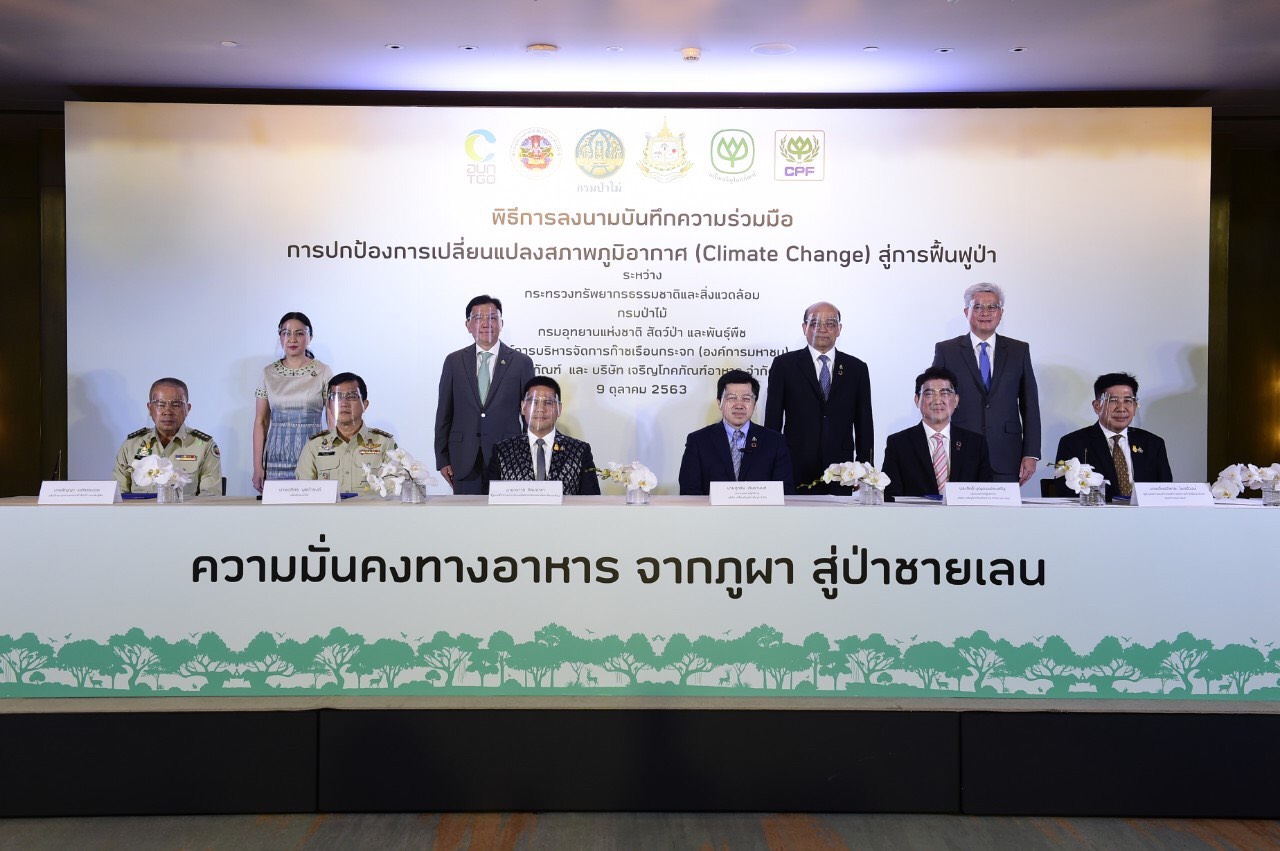
CP Foods Strikes Public-Private ‘Green’ Collaboration Pact
CPF signed cooperation pact on "Climate change prevention through Forest Rehabilitation," aiming to jointly the second phase of preserve, rehabilitate and regrow project covering 26,000 rai of terrestrial and mangrove forests for sustainable food security and balance of nature.
The Natural Resources and Environment Ministry’s Department of Royal Forest and Thailand Greenhouse Gas Management Organization (TGO) have signed cooperation pact on “Climate change prevention through Forest Rehabilitation” with Charoen Pokphand Foods Public Company Limited (CP Foods or CPF), aiming to jointly the second phase of preserve, rehabilitate and regrow project covering 26,000 rai of terrestrial and mangrove forests for sustainable food security and balance of nature.
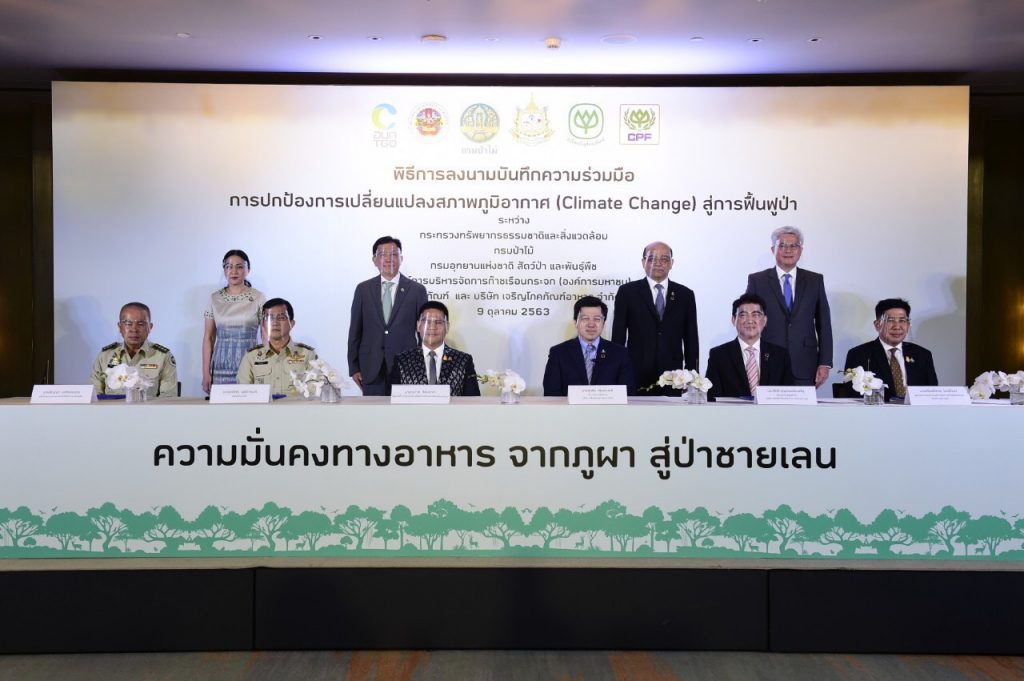
The signing cooperation was presided over by Natural Resources and Environment Minister
Mr. Varawut Silpa-archa. Accompanying him were Permanent Secretary Jatuporn Buruspat, the ministry’s high-ranking officials and TGO executives. Mr. Suphachai Chearavanont, the chief executive officer of CP Group, CP Foods’ parent company, witnessed the signing by 4 signatories: Department of Royal Forest Director-General Mr. Adisorn Noochdumrong; Mr. Thanya Netithammakun, director-general of the Department of National Parks, Wildlife and Plant Conservation; TGO Executive Director Mr. Kiatchai Maitriwong; and Mr. Prasit Boondoungprasert, Chief executive office of CP Foods.
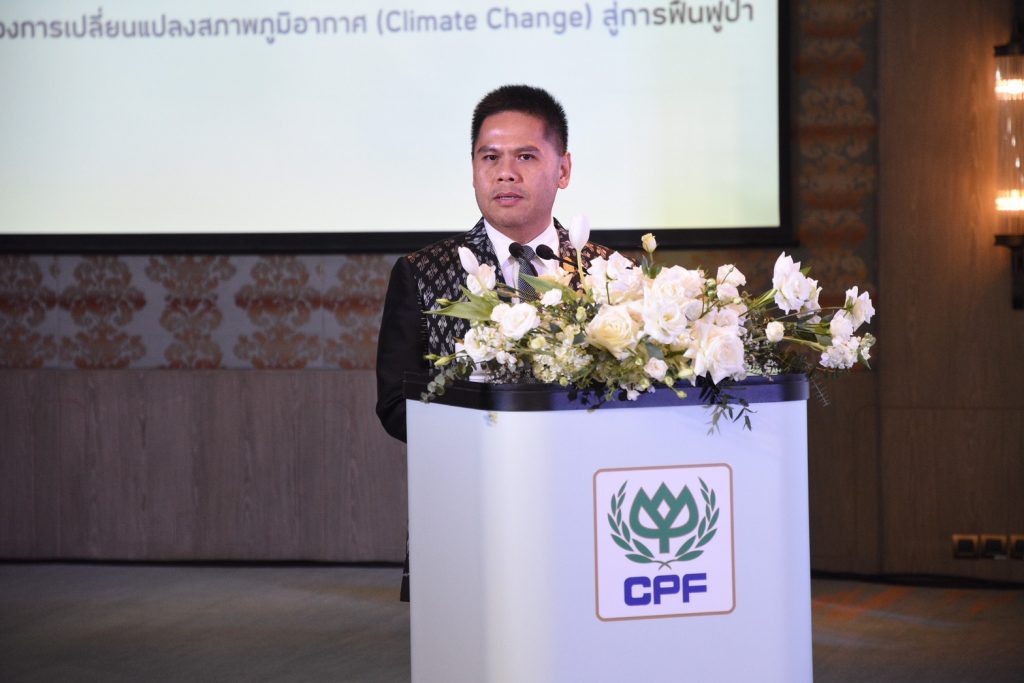
The forest preservation and rehabilitation pact entails 7,000 rai of CP Foods “Rak Ni-Ves Project” at the Pasak watershed, Khao Phraya Doen Tong in Lop Buri province from 2021 to 2025: 14,000 rai of CP Foods Grow-Share-Protect Mangrove Forestation Project in the Gulf of Thailand, Samut Sakhon province from 2019 to 2023; and the addition of 5,000-rai green areas in premises of CP Foods.
Mr. Varawut said that the pact would support Thailand’s development in the long term by helping the country meet the multinational efforts to reduce greenhouse gases for sustainable growth of the economy, society and the environment. The pact would also promote the engagement from all parties in raising public awareness on GHG-induced impacts and continually strengthen the collaboration network.
“Climate change is closer than we think. To effectively mitigate the impacts demands collaboration from all parties,” Mr. Varawut said.

The novel coronavirus pandemic (COVID-19) signals a warning that it is time to restore the balance of nature. CP Group is an exemplar private organization that sees this need and exercises policies for sustainable climate change solutions. It takes the lead in being a game changer by showing Thai society the need to restore nature and environmental balance.
In this regard, the Ministry is ready to support all endeavors in tackling environmental issues.
The Minister added that CPF’s forest rehabilitation of the Pasak watershed and part of the Gulf of Thailand in Samut Sakhon will help restore the balance of nature, particularly mangrove forests which act as natural carbon dioxide storages, erosion barriers and marine life habitats. The projects can be replicated and serve as as example for forests in other parts of the country.
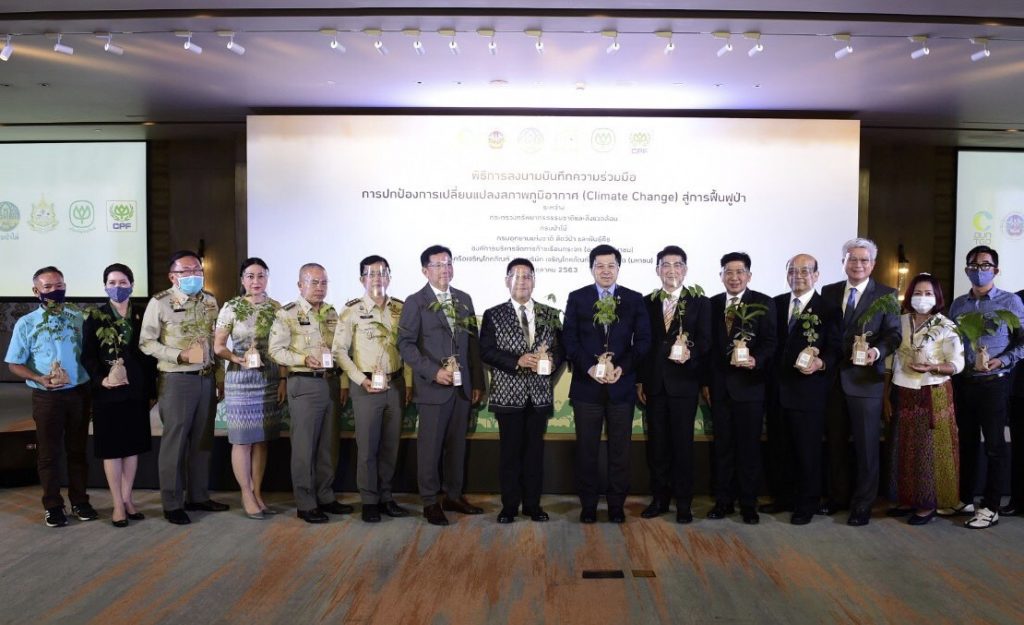
Mr. Supachai added that CP Group realizes the need for collaboration for sustainability and global climate impact mitigation. As the Age of responsibility for the environment, society and overall sustainability draws near, the private sector is obligated to acknowledge the climate impacts and set operational targets as well as indicators. As such, CP Group sets a goal to become a carbon-neutral organization within 2030.
“CP Group, fully aware of climate impacts, sets a target that our operations throughout the supply chain will achieve zero carbon emission and zero food waste in 2030. Today marks the start of our endeavor,” Mr. Supachai said.
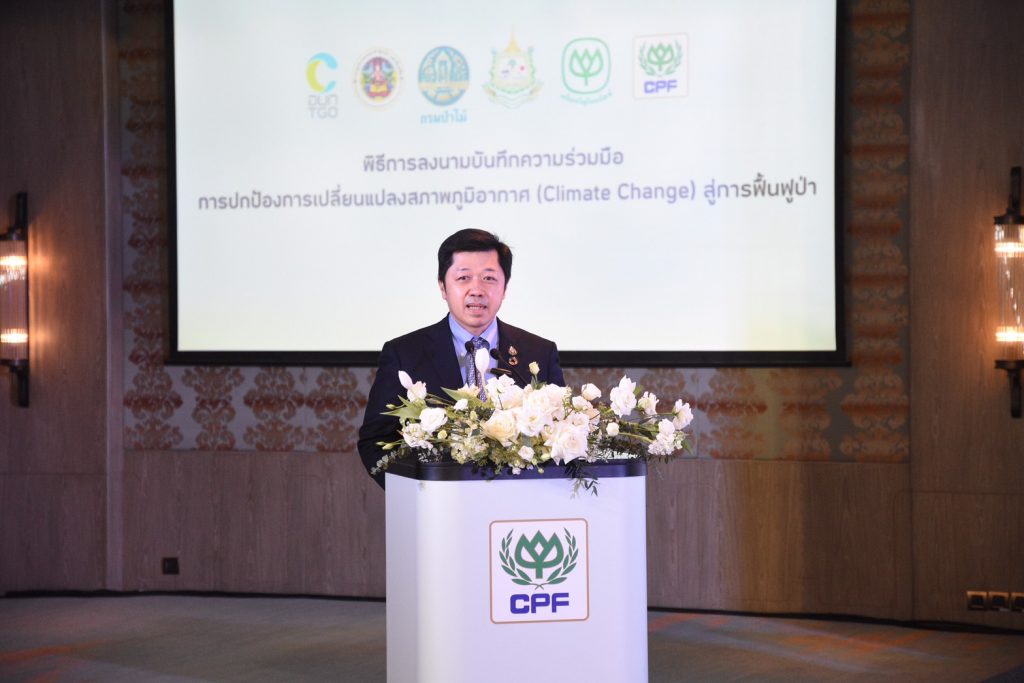
The public-private collaboration sheds more light on climate change solutions. While the public sector takes the lead and inspires private-sector followers, CP Group is ready to follow the path towards sustainability and environmental conservation.


